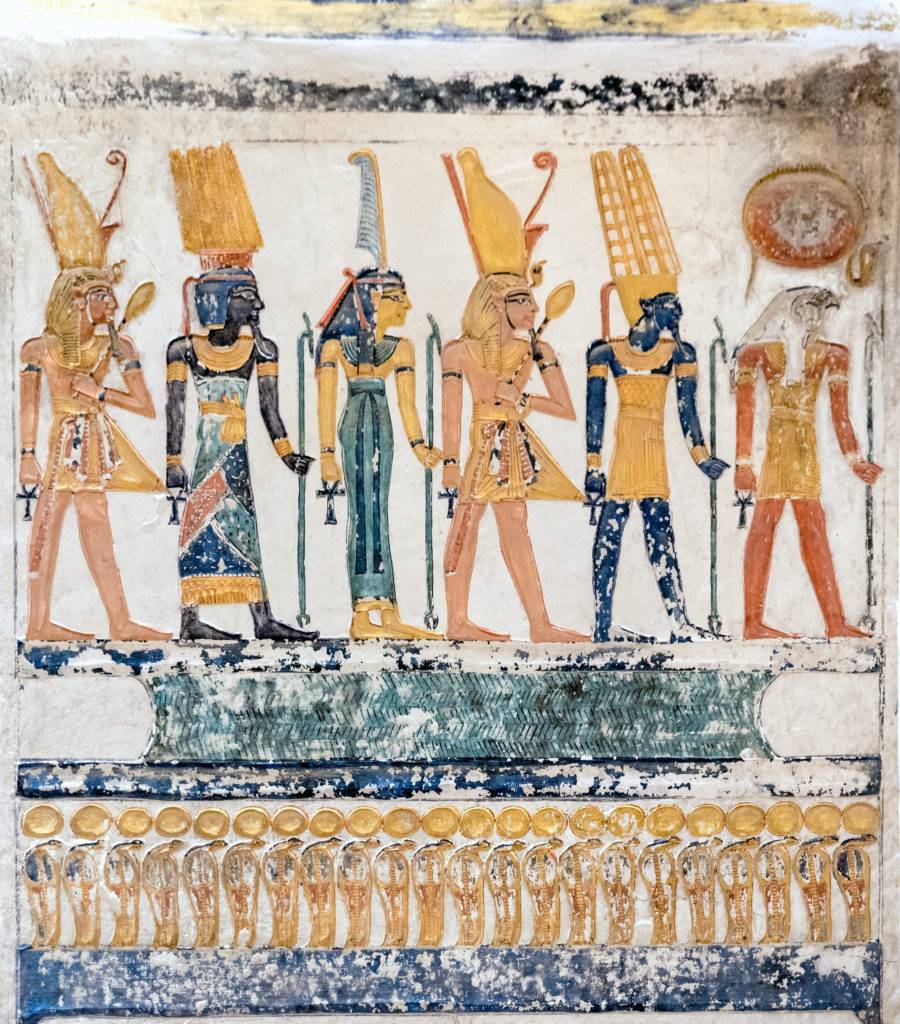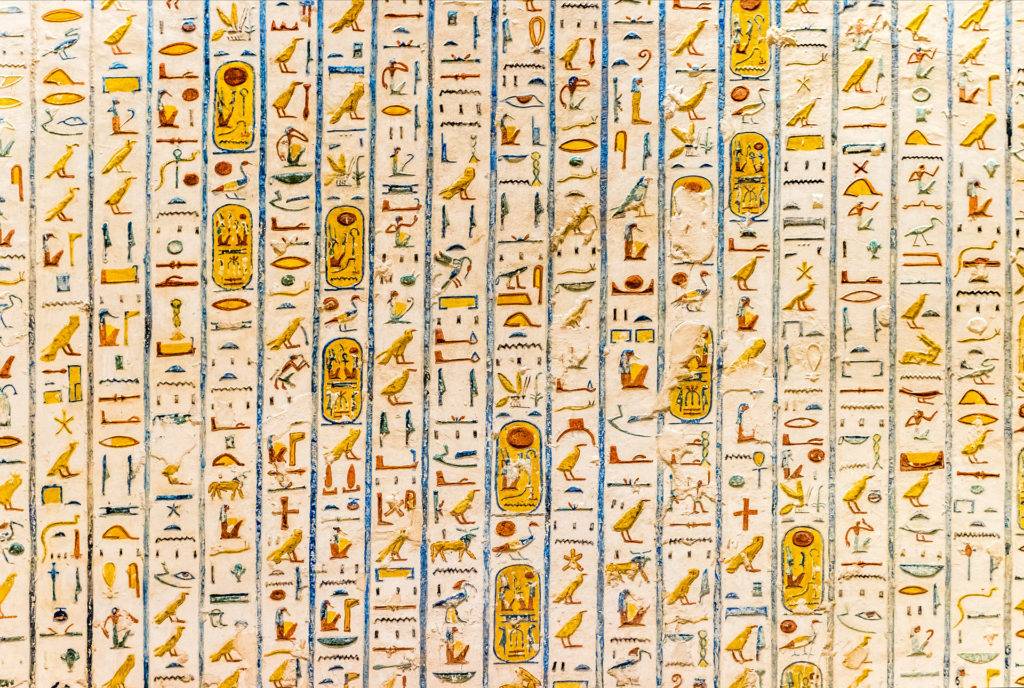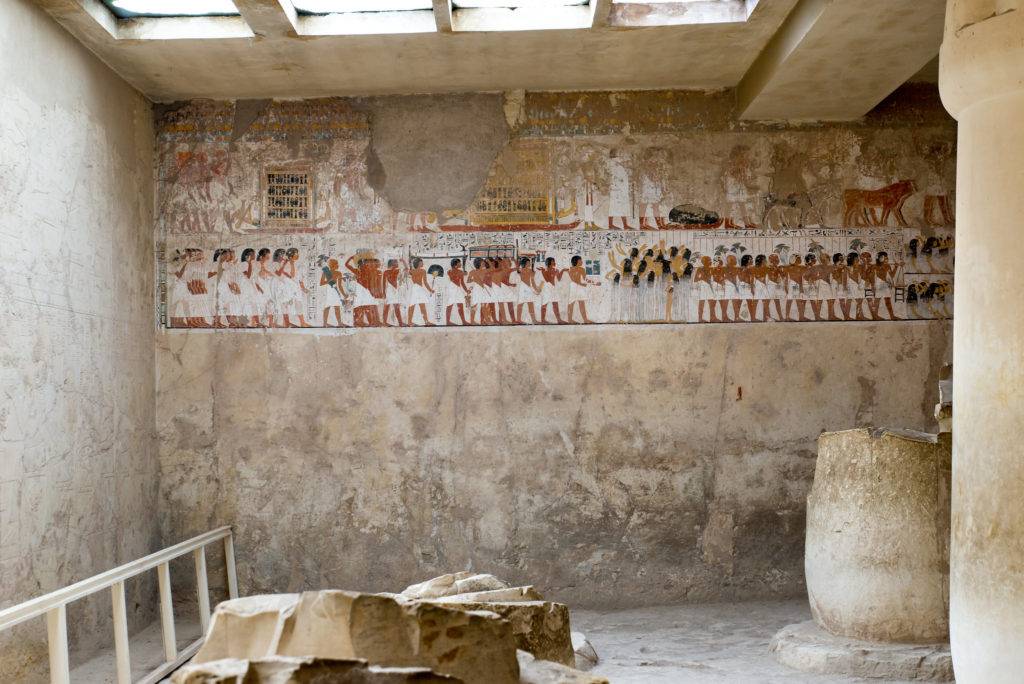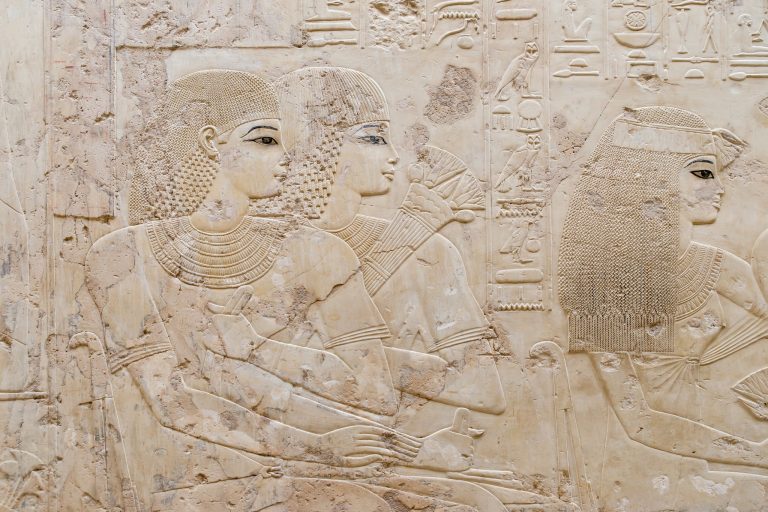Egyptian Tomb Paintings
Discover the sacred symbolism of Egyptian tomb paintings
Imagine entering a tomb beneath the hot sands of Luxor. Inside, colorful paintings and detailed carvings tell stories of eternity. The cool darkness reveals walls filled with bright blues, shiny golds, and deep reds that seem to shine. In this ancient city, once known as Thebes, the Valley of the Kings and its nearby burial sites house some of the most remarkable art in history. This art utilizes symbols to guide souls on their journey after death to eternal life.

A Sacred Stage: The West Bank's Cosmic Design
The west bank of Luxor was an important choice for ancient Egypt’s pharaohs. Each evening, as the sun sets in the west, it represents death and rebirth. This makes the valley a fitting resting place for kings from the 18th, 19th, and 20th dynasties. Above the valley, the Qurn mountain stands tall. Its horn shape looks like a natural pyramid. The ancient Egyptians viewed this mountain as a connection between earth and the heavens, showing a sacred geometry they believed was divine.
Luxor Tours & Activities
Looking to save some costs on your travel? Why not join a shared group tour to explore Luxor, Egypt? Here are some activities you might be interested in:

The Art of Eternity: A Visual Symphony of Symbols
Luxor’s tomb art is one of the most advanced ways of telling stories through visuals in history. It combines beauty with spiritual significance. When you walk through Seti I’s tomb, which is often called the best in Egypt, you can feel the desire for immortality that an entire civilization expressed through ancient paintings. These paintings seem to move in your peripheral vision.

Divine Guardians in Paint
The walls of the tomb are filled with life from the gods. Horus, the falcon-headed god of kingship, stands guard beside Anubis, the jackal-headed guide through the dangerous paths of the underworld. Osiris, the green-skinned lord of resurrection, sits between them. He is mummified and wears a tall atef crown while holding the scepter that shows his power over death.
Isis and Nephthys protect the deceased with their wings, which are beautifully painted. In Nefertari’s tomb, known as one of the most beautiful burial chambers in Egypt, their presence makes you feel welcomed into a heavenly court waiting for you for thousands of years.

Sacred Animals and Chromatic Language
Animals hold deep meanings in Egyptian spirituality. Recent finds include a hippo-head amulet linked to the goddess Taweret, which represents both danger and protection while helping souls through rebirth. Scarab beetles symbolize resurrection and reflect the sun god’s daily journey. Ba birds, which are human-headed creatures with wide wings, represent a soul’s freedom to move between worlds.
The colorful artwork in tombs uses specific colors: gold stands for the gods’ eternal flesh, blue symbolizes rebirth and cosmic waters, red represents life’s energy, green signifies regeneration, black means fertile change, and white shows divine purity. In Tutankhamun’s beautifully decorated tomb, these colors create a stunning effect that turns visits into immersive experiences of ancient beliefs.

Hieroglyphs: Magic Carved in Stone
The hieroglyphs covering the surfaces are magic spells meant to work in the afterlife. The Book of the Dead acts like a guide to the underworld’s layout, displayed on the walls. The Pyramid Texts, which are the oldest religious writings, call upon powerful forces that shape the universe. Inscriptions about individuals preserve their identities forever, while offering formulas that promise continued abundance in the next life.

Crafting Immortality: Divine Artistry
Creating tomb art required deep spiritual commitment. Skilled craftsmen and their apprentices worked carefully. They used grid systems to ensure balance and harmony. They began with red ochre sketches, which they then refined in black. Relief carvers shaped surfaces to interact with light and shadow. Mineral pigments stayed vibrant for thousands of years, and protective varnishes sealed their magical purposes for eternity.

Tombs as Cosmic Theaters
Each tomb acts like a three-dimensional stage where death and rebirth happen forever. The descending corridors show the sun god Ra’s journey through the underworld at night. The pillared halls represent the supports of heaven, while the ceilings of the burial chambers, filled with stars, recreate the night sky of new life. Side chambers contain protective spells and important items for the grave. As you walk through these spaces, you become part of the cosmic story.

Living Archaeological Theater
Luxor keeps many secrets hidden. Recent excavations in 2025 found rock-cut tombs near Hatshepsut’s Valley Temple that date from the Middle Kingdom to the Ptolemaic period. These tombs revealed bronze coins from Alexander the Great, funerary masks, and a child’s coffin that is 3,600 years old. In the tomb of Djehuti-Mes, workers found beautiful stelae. Additionally, excavations in South Asasif uncovered 11 burials that showed family traditions.
The most exciting discovery came from the Ramesseum, where archaeologists uncovered a “House of Life” school. They also found Third Intermediate Period tombs that contained over 400 figurines, canopic jars, and beautiful jewelry, including necklaces made of amethyst beads. These finds show that tomb art went beyond wall paintings to include many three-dimensional objects, making Luxor feel full of archaeological possibilities.

Why Luxor Demands Your Pilgrimage
Luxor’s tombs are more than just places to visit; they are significant sites for anyone interested in the human ability to create beauty that lasts beyond life. Seti I’s tomb feels like stepping into a sacred dream, with long hallways where time seems to stand still. Nefertari’s tomb shines with feminine beauty and colors that look freshly painted. Tutankhamun’s small chamber draws you in with its personal touches, reminding us that even great kings were once human.

Where Art Conquers Time
Luxor’s tomb art is one of humanity’s greatest artistic achievements. It captures eternity in paint and stone, creating beauty that can guide souls through death. Ancient Egyptian artists used complex symbols, expert techniques, and a deep spiritual vision to make art that serves a practical purpose: ensuring eternal life.
Every symbol tells a part of the story of resurrection. This includes Osiris’s powerful scepter, scarab wings, protective blues of the sky, and the rich blacks of the underworld. As new archaeological discoveries reveal more about this ancient work, Luxor remains a living gallery where the past speaks through beauty that lasts.
For visitors willing to enter these sacred spaces, Luxor offers something special—the chance to see art made not for money but for our deepest need: hope that death is not the end and that love and beauty can last through time. In these painted chambers beneath the desert, the ancient Egyptian dream of forever comes to life, if only for a moment.
Did you know that
By purchasing through our links, you support us at no additional cost.
Thank you for your support. ♥️






